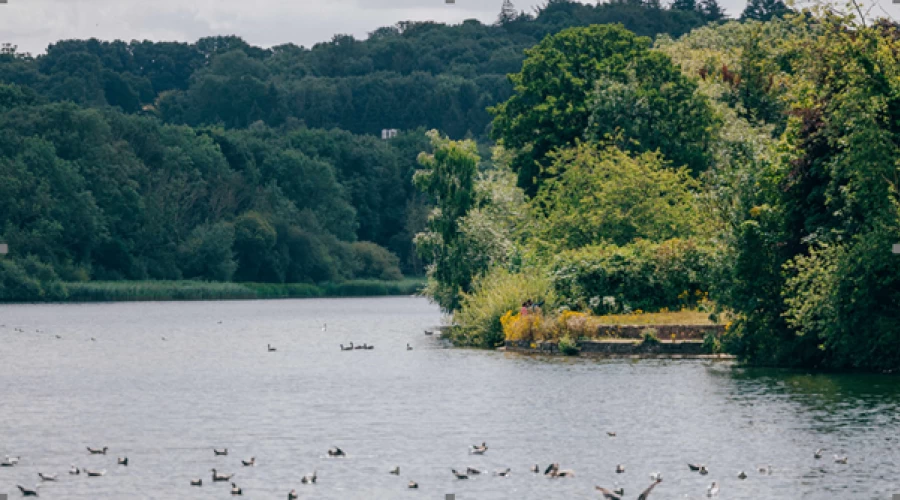Pandemic
- Risk Level: Very High
- Risk Ref. #: NRR54
- Likelihood/Impact: 4/5
- Download the Risk Register

Introduction
Where should we start? Several years ago most people would consider a Pandemic as one of two things; something that only happens in a movie (Outbreak or Contagion) or a great idea for a board game (if you’ve never played it, Pandemic the game is quite addictive). However, more recently it’s become a word we’ve simply heard enough of and can’t wait to never hear again.
Interesting Fact
There have been 4 pandemics since 1900, the 1918 Spanish Flu, 1957 Asian Flu, 1968 Hing Kong Flu and Covid-19.
Local Risk Rating
Pandemic Influenza is rated as ‘Very High’ on our Community Risk Register. See the main table show in ‘What is Risk?’ to see why.
Impact: Catastrophic (5) Likelihood: Medium High (4)
What is it?
So what is a Pandemic? Firstly its important to understand the difference between an outbreak, epidemic and a pandemic.
- Outbreak – when an illness happens in unexpected high numbers, it may be in one or more areas and could last days or years.
- Epidemics – when an infectious disease spreads quickly to a lot of people, normally it affects a larger area than an outbreak
- Pandemics – when a disease spreads across countries or continents. It will affect more people than an epidemic
Considering our experience with Covid-19 its quite easy to see why it was classed as a Pandemic if only purely due to the number of people and countries it effected. At the point of writing this article only one country claims to have not had Covid, which shows you just how far spread it became. Of all the infected countries, its not too difficult to see a pattern. A generalised view show that those that are well connected through business and tourism got infected earlier with the smaller less connected islands generally being the later countries to be infected.
Something we find much easier to understand now is the effects of a Pandemic – previously it was just too big to consider, but below are some of the biggest impacts we might see (not including deaths):
- Total lockdown (something we only ever thought happened in disaster movies)
- Unable to visit friends and family in hospital
- Reduction in availability of certain foods and products
- Cancellation of shows (music and theatre)
- Increase in families moving from cities to the countryside
- Almost total closure of airports
Everyone has a different experience with the pandemic, but one thing we all have in common is a deep yearning to return to some semblance of normality where we are able to see each other and travel around again.
As with any disaster the recovery phase is just as important as the response phase and no doubt the phrase returning to a ‘new normal’ fits perfectly with the pandemic as the experience will change the way we live forever.
History
There have been pandemics before and there will be them again. It’s a horrible thought, but we have lived through the process in previous years, so we know its likely to happen again. The good thing is that generally they aren’t that often and with medical progress and knowledge and experience we are much better prepared for them than ever before.
Spanish Flu
The pandemic broke out near the end of World War 1 and is known as the Spanish Flu due to many considering Spain to be the epicentre of the pandemic. However numerous hypothesis think this (Spain being the epicentre) is actually incorrect with many other countries who were at war suppressing bad news to keep morale up. Therefore its quite likely that the ‘Spanish’ Flu was prevalent in other areas before the reported outbreaks in Spain.
Pandemics and flu outbreaks tend to adversely affect the young and old more than any other age group, the Spanish flu detracted from this pattern by also badly affecting young adults. Again a number of different explanations can be found for this, one being a climate anomaly and the other being than malnourishment and poor hygiene exacerbated by the war promoted bacterial infections.
As with the most recent Covid-19 pandemic the Spanish Flu had several waves;
- Wave 1: Early 1918 – said to be relatively mild
- Wave 2: Second half of 1918 – far deadlier than he first wave
- Wave 3: First half of 1919 – less deadly than the second wave, but worse than the first
- Wave 4: Early 1920 – outbreaks in some areas and countries across the world.
The Spanish Flu was said to have ‘ended’ by late 1920, with the virus becoming less deadly. By 1921 deaths had returned to near pre-pandemic levels.
The Spanish flu is said to have infected around 500 million people which at the time is considered to be about 1/3 of the worlds population. Its incredibly difficult to get an accurate record of the Spanish Flu Pandemic deaths but estimates place it between 21.6 million – 100 million. Recent studies consider the figure to be closer to the lower estimates.
As you can imagine some communities were totally devastated with everyday life severely altered. Some of the consequences were;
- Shop closures - people weren’t able to get food
- Medical staff sicknesses – so healthcare was severely under resourced
- Grave Digger sickness – lack of resource to bury the deceased
Some villages even disappeared all together as high percentages of their population died, leaving them unable to continue.
Related News

Swindon Borough Council - confirmed case of bird flu
>1m read
Swindon Borough Council - confirmed case of bird flu

Food Safety Standards - Bacteria love their turkey undercooked
>1m read
Food Safety Standards - Bacteria love their turkey undercooked
What are we doing about it in the LRF?
As you already know Pandemic Influenza is rated as Very High on our Community Risk register, and in fact it’s the top risk and has been for some time. You can therefore take some reassurance that we have been aware of its potential and planning for it for many years.
Our pandemic plan has undergone updates and revisions every year and was tested regularly to ensure we were as ready as we possibly could be. Unfortunately Pandemics also tend to lead to an ‘excess deaths’ scenario, with the LRF also having a plan and its own equipment to cater for this. Our planning also includes documentation on how to carry out ordinary responses in a pandemic (for example how to operate rest centres in a pandemic).
Having said all of the above, the Covid-19 response was over and above anything we could have ever envisaged or imagined. The response, recovery and governmental decisions were something we could only ever partially plan for and the key point is about being flexible to whatever is put in front of you.
Moving forward the LRF and country is much better prepared for a Pandemic and we in general understand what the impacts and consequences are likely to be.
What can you do?
Unfortunately there isn’t much you can do to stop a Pandemic from happening, but you can help to reduce and slow the spread. Of course top of the list is making sure you follow governmental rules and best practice, but the easiest one is just to continue to wash your hands and practice good hygiene. In addition to that, its important to not lose that community sprit we created in the Pandemic, that could help us not just in future flu outbreaks but in all walks of life.
Downloads
Pandemic Risk
Pandemic Risk